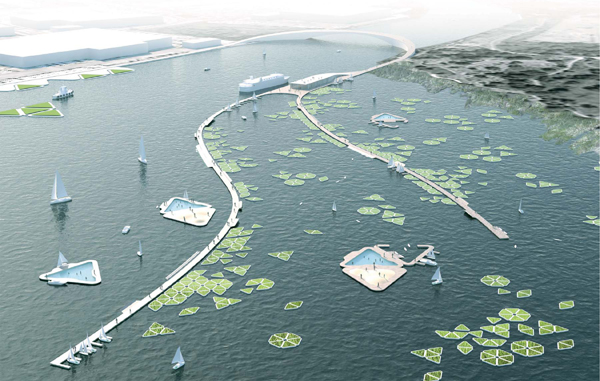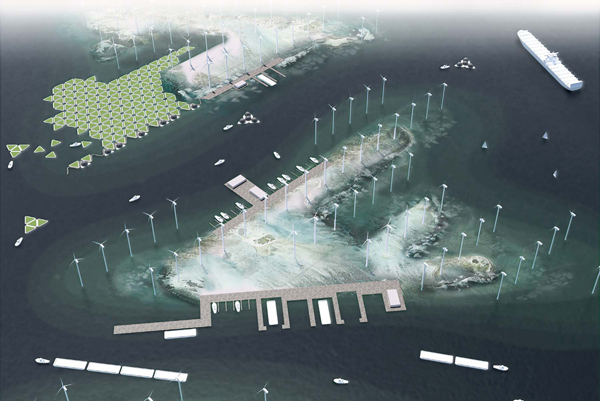
At a time when megacities of the world are looking for ways to meet twin demands of accommodating its ever increasing population and meeting industrial demand for land at the same time, two Canadian architects have come up with a plan that could prove beneficial to all cities that lie besides a sea or a river. Named as Parallel Network, the design was a winning entry in the One Prize 2011, an annual award for promoting green city designs for future.
The theme for this year’s award was to find a green design for New York and its waterways. Considering that New York’s water resources are the main source of connectivity and economic activities, winning architects, Ali Fard and Ghazal Jafari, came with a design that is in sync with the city’s new waterfront development plan for the Blue network, expected to be realized by 2020. According to the jury, the Parallel Network not only synthesizes economy, environment and transportation needs of the city but also has a plan for recreation for the inhabitants.
Historically, the great cities of world developed in the vicinity of a river or a sea.They shared a symbiotic relationship with these water bodies. Access to water source not only solved the drinking and irrigation needs but also provided avenues for international trade so that the city and its people can prosper. The modern cities also need to evolve an architecture that would integrate the waterfronts with development plans and redefine human-nature relationship in the present context. Parallel Network could be an example worth emulating.

The Parallel network envisages a cellular infrastructure that could be implemented incrementally and easily maintained as each cell can be separately removed or repaired without affecting the entire system. The cells are in the form of floating pods that would promote need-based growth over a period of time. The main site of NY Gaia located in the upper New York Bay will produce clean energy through wind power and bio-fuel obtained from the the large scale cultivation of algae. It will also support activities related to marine transportation through artificially developed reefs and feed other cleantech industries.
Whereas the Bronx Blue Terminal located at the mouth of Bronx river will be a terminal point for the ferries and act as recreation, research and education node for the entire Blue network. It will also promote habitat preservation and regeneration.
Via: Oneprize




